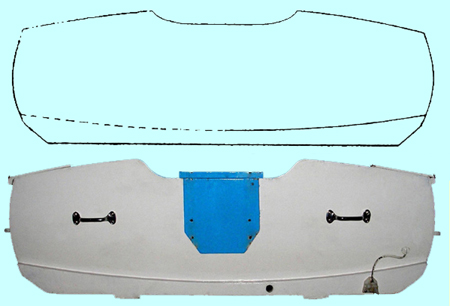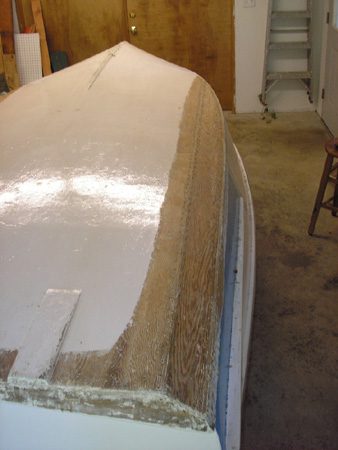

The Transom and Beveled Chines
The Ace was one of many dual cockpit plywood runabouts made in the 1950s. Other Pacific Northwest examples included the Lady Clipper and Mansfield. Glen-L designs also added to the mix of really fun boats. A signature feature of the Ace, though, was its beveled chines, best seen at the transom. The two transoms shown below illustrate the point.
The first is a drawing extracted from the plans of the original Ace designed by William D. Jackson and published in the Boat Builder's Handbook in 1956. The bevels allowed "safe turns at high speed." The second shows the white transom of the Waali's 1959 Sande Ace.

The flat spans measured across the bottoms of both Aces were 48 inches at the transom, not surprising since that is the width of a standard sheet of plywood.
Some other features used by the Sandes were two wedges on the bottom (to create some lift) and a drain hole (with plug) although not all Sande Aces had these. The Sandes also used a 3/4 inch board to raise the usual Mercury outboard to the proper height.
The beveled chine and lifting wedge on a Sande Ace.






